All the cool kids are on EditART right now. The new and budding NFT marketplace made a bit of splash in the gen-art space over the past couple of weeks. Let's have a look at what EditART is all about, with some words from it's creator Piero at the end!
Even though the platform released in September of 2022, recently we've seen quite a bit of newfound interest, with some of the major players in the genart NFT space flocking to release their tokens on the platform. Such as Aleksandra Jovanic, Loackme and Juhani Halkomaki, among others.
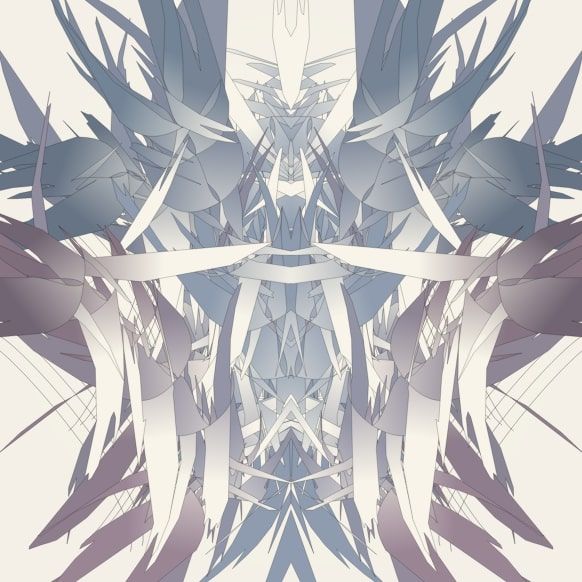
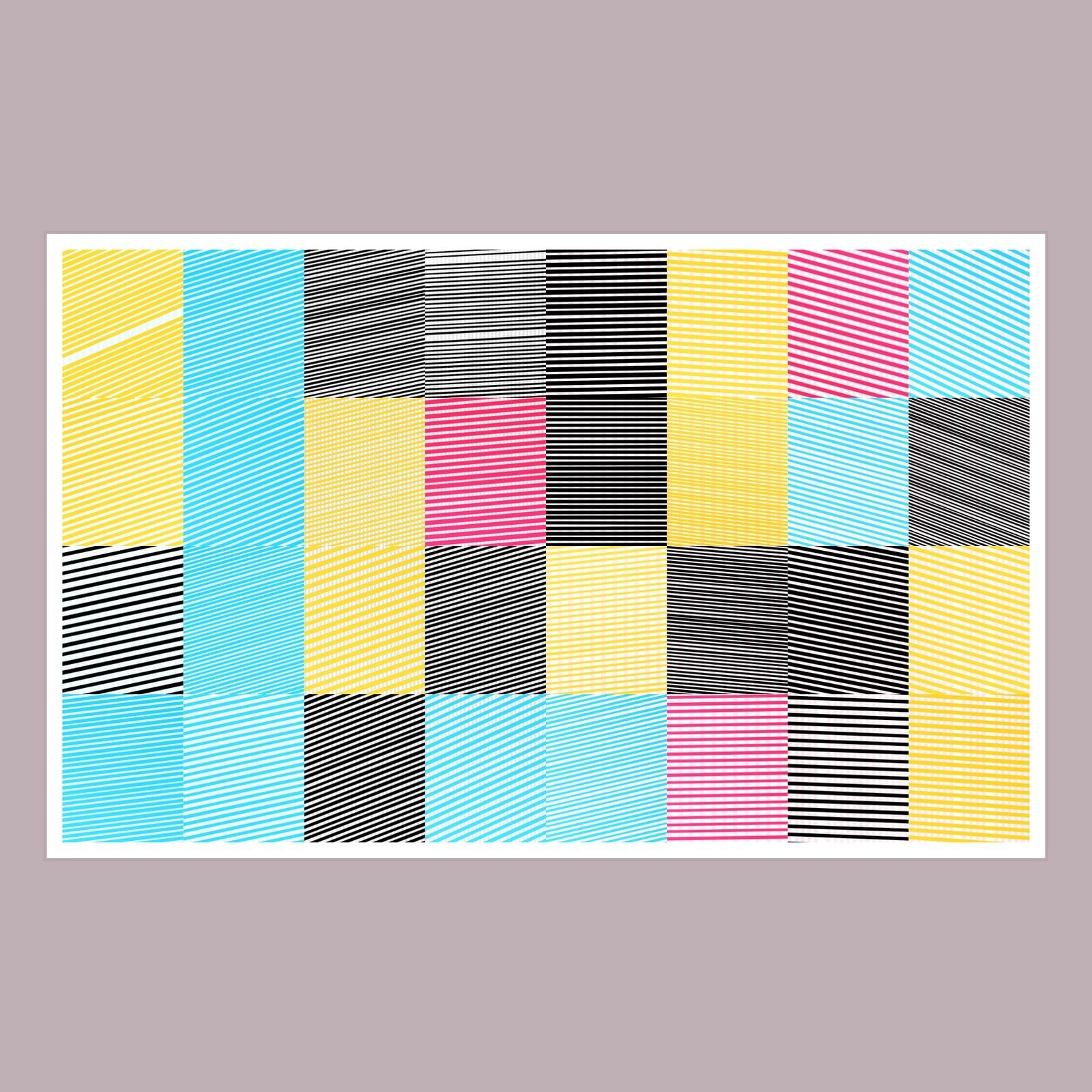

The best way to describe editART is as an aesthetically minimal, indie alternative to FxParams. Similarly to the latter, it's a generative art NFT marketplace, where the minter can customize and tweak the generative artwork before committing to a particular iteration.
Let's see how EditART puts a new spin on the customizable gen art NFT genre 👇
What's special about EditART?
EditART is very straight-forward. The minting interface consists of exactly 5 sliders. No more, no less. Oh, and did I mention that they're unlabeled?
It's up to the artist if they want to include an explanation for what each slider does, alternatively they can leave it up to the collector to figure it out for themselves by simple trial and error. I believe that the esoteric nature of these sliders, in combination with the minimal interface adds to the excitement of creating a your personal custom iteration. First you get to play, and then you get something to take home with you.
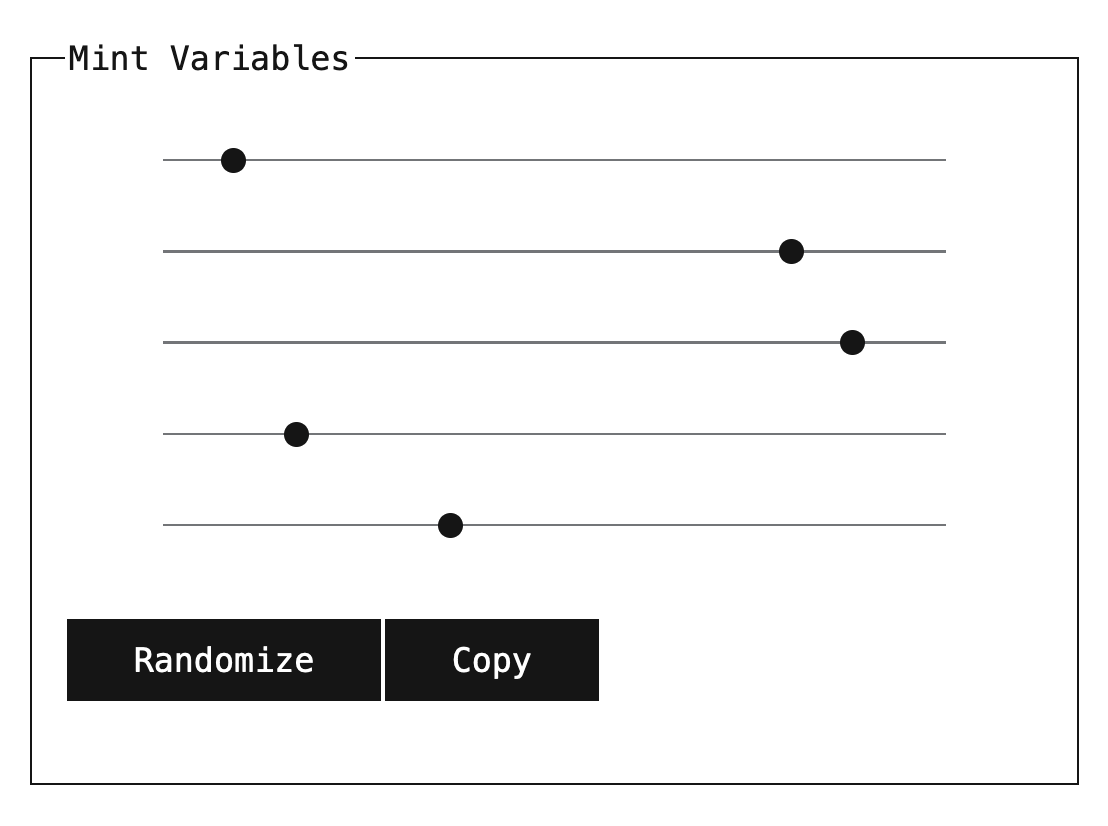
I've recently had the feeling, that FxHash is getting a little bit too complicated. Especially when it comes to selecting the parameters for an FxParams piece. Originally, collecting was as easy as clicking a button; with parametrized pieces the minting process now requires a time investment where one needs to figure out the parameters and then configure them. I feel that it takes away from the surprising nature of the original minting experience a little bit - but maybe that's just me.
This also brings up new considerations for the artists, where they need to decide which variables should be revealed to the world as tweakable parameters, and which should remain hidden within the code.
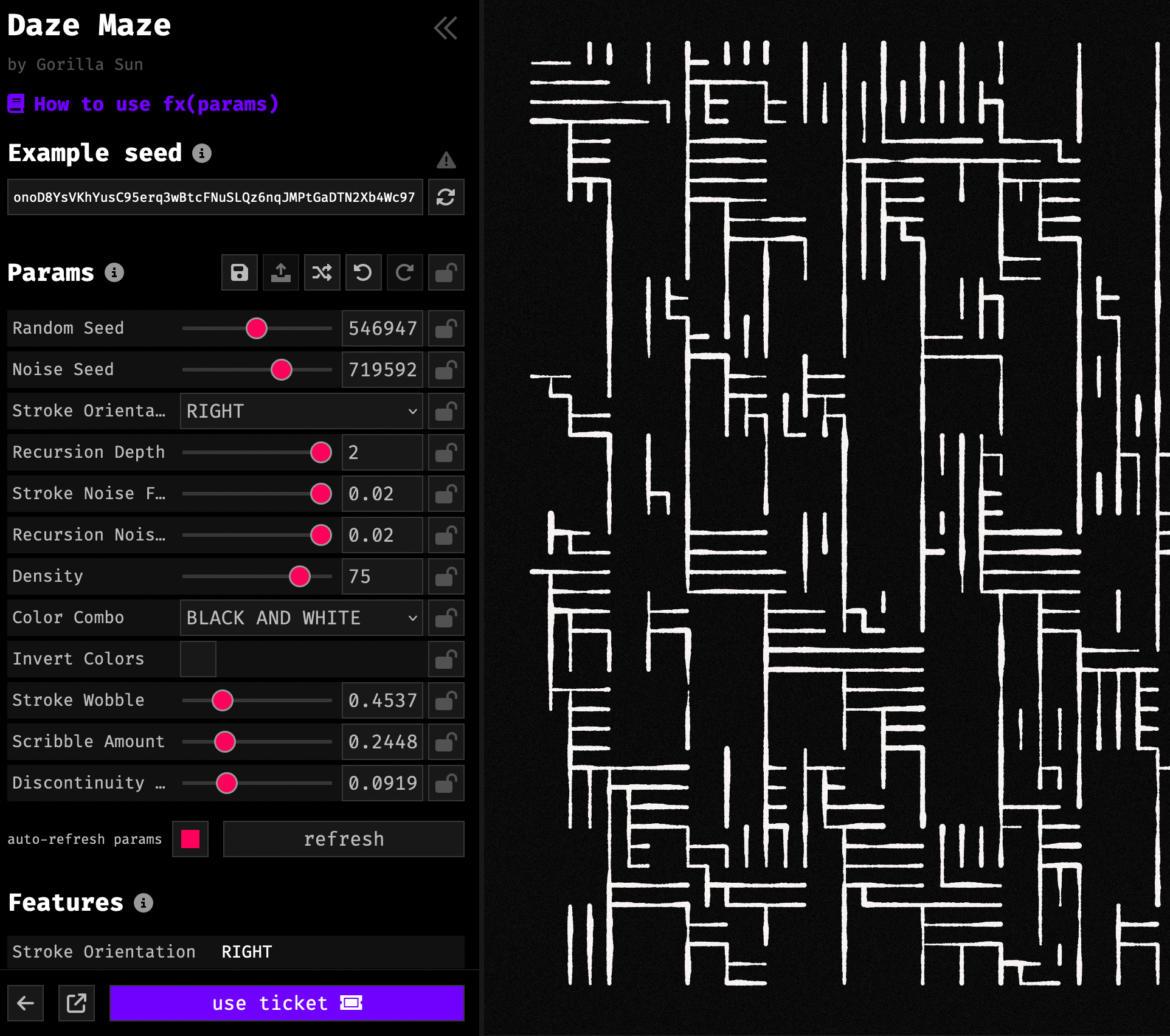
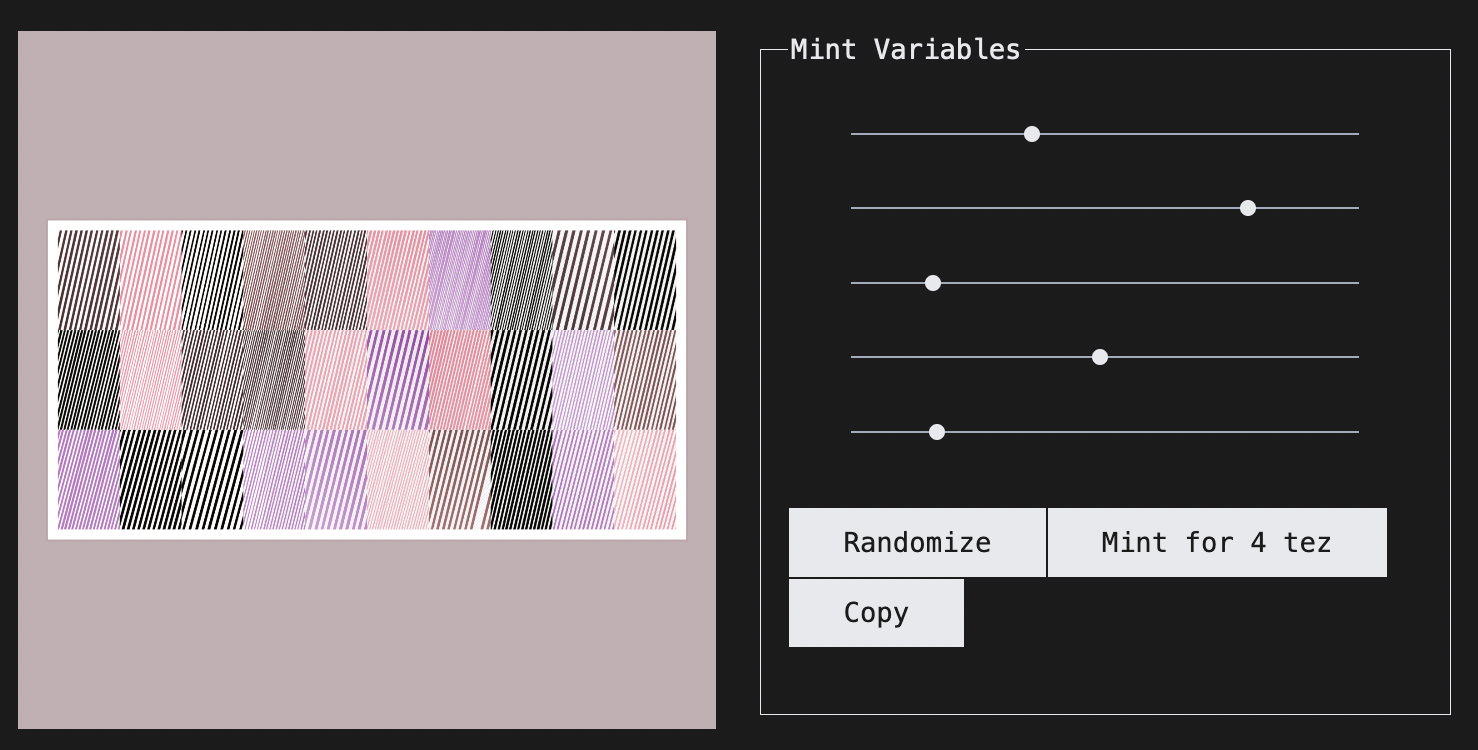
On EditART this is simplified by a layer of abstraction. As the collector you get to play a little with the sliders, visually getting a feel for what they do, without seeing the numbers that they modify. It's just a little bit less visually taxing.
Moreover, the collector transcends the simple role of someone who clicks the mint button, and becomes a co-creator of the minted iteration. This is an inherent feature on the platform, where each iteration indicates it's original co-creator.
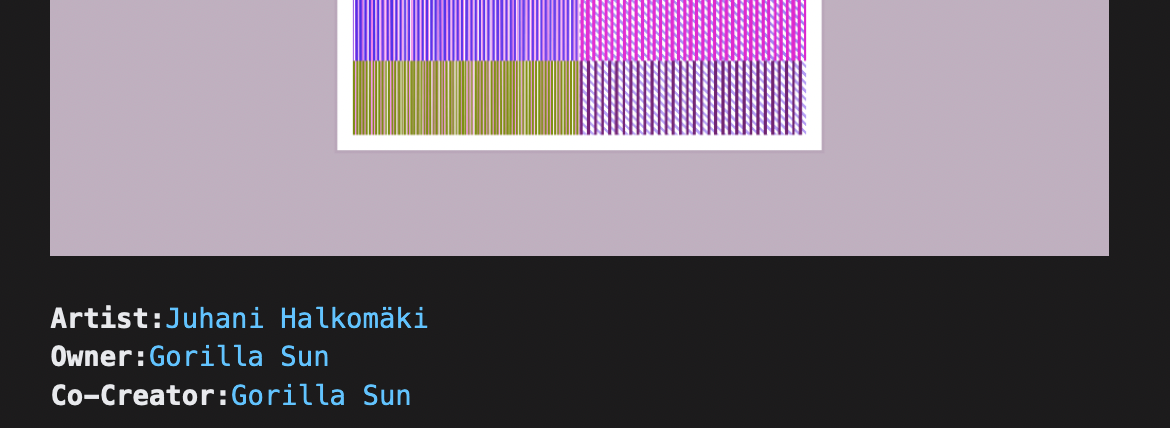
Being the OG minter on EditART is also associated with 5% of royalties from secondary sales. This is also possible on FxParams, but on EditART it feels like there's a bit more emphasis on this aspect of the minting process.
Overall, EditART's existence is beneficial to the current Tezos NFT scene. Having different, and nuanced platforms is important - it puts things into perspective, and encourages a varied eco-system of platforms. At the same time, it gives artists more tools to work with, and collectors more options to choose from.
Interview with Piero
Piero, aka pifragile on Twitter and creator of EditART, is a super down to earth guy. When I created my token Blöck for the marketplace he made the minting process a super enjoyable experience. I shot him a couple of questions afterwards in preparation for this article:
Tell us a little bit about yourself. How did you get into Generative Art?
My name is Piero, I started coding when I was 12, then kinda lost interest in my teenager years, but soon found back in my 20s when i decided to start studying computer science. I have been interested in crypto since 2017.
My way into generative art I found in early 2021 when I heard about NFTs and I started hacking together some GIFs in Python. Soon I realised how satisfying creative coding was because it adds a whole new layer to the otherwise sometimes quite dry coding world. I had finally found a way to express myself visually that I had never known before.
I scrolled down on your timeline, you started working on EditART in September 2022 - what were your initial inspirations? Was Crayon Codes an inspiration?
The launch of EditArt was in September 2022, but the work started early 2022. I realised that the bear market could be an opportunity to learn how to code Tezos smart contracts and so I just started and never stopped :) Of course I wanted to have a meaningful project and after some iterations I came up with the idea of customizable generative art.
The only thing like this that I had seen before was ETH Block Art. But I wanted to do it way simpler. Firstly because I like simplicity a lot and second because I wanted to build something that was feasible for one person to finish in a reasonable time.
What were some of the challenges of smart contract programming? I've been wanting to learn that myself, but I never seem to find the time for it.
I would say the main challenge is that you have to work very precise and do really thorough testing as there will be money flowing through this contract and also there is no possibility to fix bugs once the contract is live. Other than that I found that SmartPy offers a really neat python interface which makes the development super fun.
Did you know about FxParams at the time? FxParams was anounced mid November, do you think you had some influence there?
No, I had no idea about fx(params) when I launched EditArt. I cannot say if there was any influence, but the idea wasn't new or groundbreaking, so probably fx(hash) just had the same idea at the same time.
How is EditART different from FxParams? Why specifically 5 sliders?
fx(params) vs @editart_xyz
— Piero (pifragile) (@pifragile) March 22, 2023
Now that fx(params) is live, I want to share my thoughts on what differentiates the two platforms.
TL;DR
fx(params) is flexible and complex, while EditArt is simple and intuitive.
A thread.
The tweet says it all :) What I can add is that EditArt is WYSIWYG. Also I tried to make the reloading after a slider change as smooth as possible.
EditART reminds me a lot of early HEN, in a way the interface feels familiar. Is there also some connection there?
HEN was certainly an inspiration. Generally I love everything that reminds me of the excitement I felt when I first started exploring the internet in the early 2000s and I definitely got that feeling with HEN.
What's in store for EditART? What are your plans for the platform?
The experiences that I make while building such a platform as a one-man-show are invaluable and I definitely want to keep going and learning. At the moment EditArt is not making any profit, so I still have to work for clients to pay my bills.
Of course my dream would be that EditArt will pay my bills some day. This will take some time, so the plan is to build a solid platform, build trust in the community and be in the right spot when the next bull run hits 😉
I saw that you're also working with Andre Fuchs on a new platform, how is that going? Are there any details you can share at this point?
At this point I can't say too much. We were very happy about the interest in the new platform by the community and are currently looking for funding. For me personally, having heard many stories of founders with burnout, I have to make sure that it will not be too much, now that EditArt is taking up quite some of my time.
I still want to be doing this in 10 years ☺️
Thanks for the answers Piero!
Want to release you own token on EditART? Shoot Piero a message on Twitter!
Blockchain Tech enables Independent Devs
Recently I came across a tweet by Galo who is putting together his own little tezos powered print shop:
more print shop progress... pic.twitter.com/49C2qRVh0Z
— itsgalo 🗯 (@GaloAndStuff) May 11, 2023
I believe that we've forgotten a little bit how amazing this tech is. Especially when it comes to the Tezos blockchain, the barrier to entry is quite low: it boils down to taking the time and learning how to program smart contracts. This alternative system to traditional payment processing enables many new ideas, new marketplaces and nuanced interactive blockchain experiences that go beyond the simple concept of effectuating a purchase in an online store.
Amongst all the ugly parts of web3, the scams, the meme coins, the crypto bros, the FOMO and the WAGMI, we should place initiatives that try to reimagine the web as we know it, on a pedestal and celebrate them. Just like Piero's initiative. Kudos!
Looking at the past, OG HEN started out as the idea of a single developer. It's inception has arguably been the most transformative event that has happened to the Tezos blockchain, giving rise to a massive community that is still going strong till today.
Along comes FxHash and joins the arena as a new player. Again the idea of a single dev evolves into one of the largest marketplaces on the entire blockchain:
I have been working on an open platform to mint Generative Tokens on the @Tezos blockchain.
— ciphrd (@ciphrd) October 24, 2021
I will release the beta this week.
Follow this account if interested -> @fx_hash_ pic.twitter.com/vlu8Yp7t37
Then we also saw some smaller, more specific platforms like 8bidou and typed.art, that also made some ripples in their own way.
All of this is to say, that if you have an idea you should try to realize and see what comes of it. I've got a few ideas myself, the only thing standing in my way now, is to actually get my hands dirty and learn how to write them smart contracts.
Closing Thoughts
In this post we've had a closer look at EditART, talked about it in the context of blockchain tech and made a few comparisons to the closely related FxParams. We also had a few words with it's creator Piero about how he found his way to take the leap and put together the platform.
You know what to do - go check out EditART, and maybe grab a piece or two while you're there! I'll also have a new piece up there very soon, here's a little teaser:
Blöckbuster #creativecoding
— Ahmad Moussa || Gorilla Sun (@gorillasu) May 5, 2023
Always fascinates me how ideas evolve over time! ✨⬆️ pic.twitter.com/7WjLJakBJr
Hope you enjoyed! If you did consider signing up to the newsletter to receive updates about new content when it gets released - just hit the bottom in the lower right corner of the window! 👉👇📬
Cheers, and happy sketching ~ Gorilla Sun
